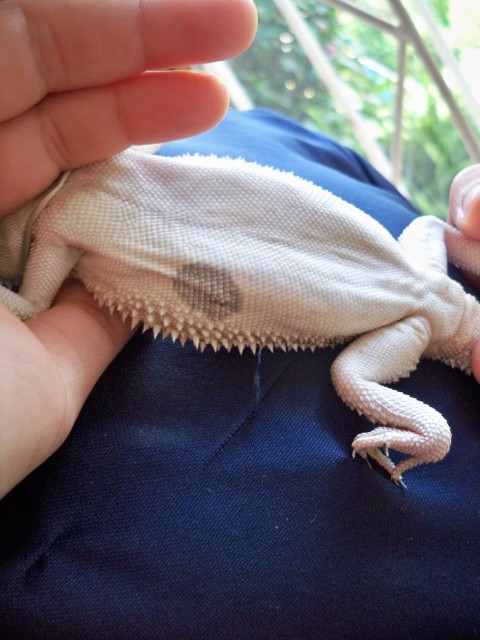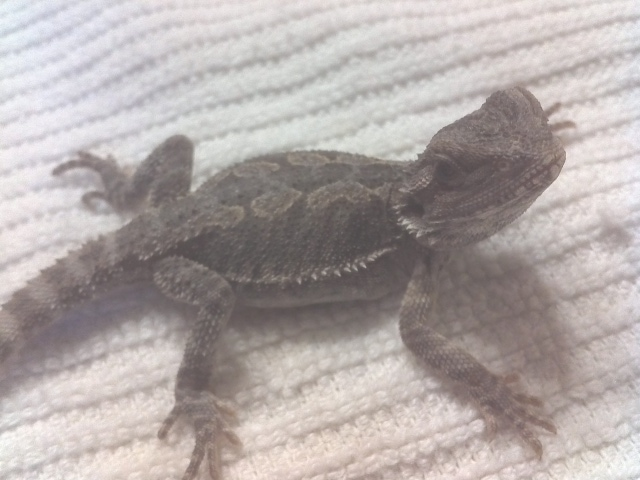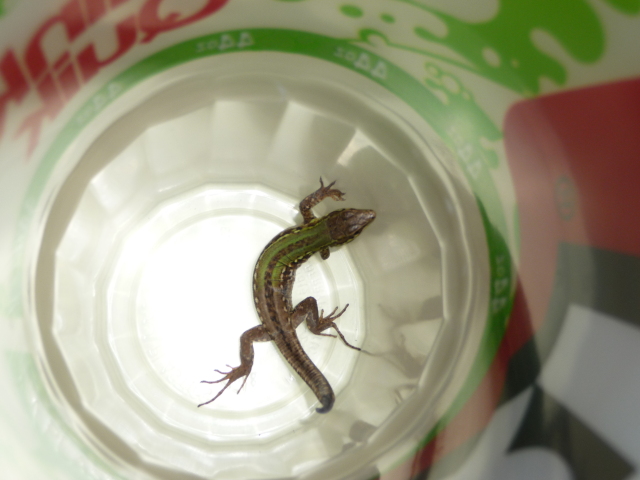QuestionHi Thea,
I found a frog a week ago. From my search it looks like a tree frog because of its long legs and upper extremities. Its colors range from dirty green to pale gray and pink. I live in Florida and I found it in the back of my backyard crawling with paralyzed legs. There are several cats outside of here but I saw no bite marks. I took it home and made a 10 gallon terrarium. The frog almost never moves. It gets scared of me and tries to run away crawling. I bought small dead mealworms and I am forcefeeding it 4 every other day to minimize stress. I also put some live plants into the tank and a small dish with water (filtered). I put it in the dish but it almost jumps out immediatelly (it is very shallow). When the frog twists or turns, it is hard for it to get back on the belly. The legs have no feeling in them, they just hang and are folded in somewhat abnormal way. I searched different diseases and I dont think it is the red leg. I am thinking maybe metabolic bone dz. I have clindamycin drops at home and I dont know if you have had any experience with that in frogs. Also I have syringes, needles and 0.9% nacl sterile fluid at home. I have a 5 yr experience as a vet tech (dogs and cats only). Do you have any ideas what could be wrong with it?
Thank You very much
I understand if you're busy
Kate
AnswerHi Kate, My first suspicion would not be metabolic bone disease but rather injury or exposure to toxins such as pesticides. MBD is really only a problem with captive frogs as we can never completely duplicate their natural diet,lighting and other living conditions. Amphibians and reptiles are very well suited to the natural habitats that they evolved to live in so nutritional deficencies in the wild would be unlikely.
Unfortunately once that natural environment is altered, through pesticide use, agricultural run-off or other types of environmental contamination then problems such as paralysis or limb deformities have been documented in frog populations.
Toxin exposure would likely affect the immune system as well and pre-dispose a frog to both bacterial and fungal infections but I would agree that it doesn't sound like that is the situation here. Bacterial infections tend to produce skin lesions and obvious signs of septicemia, they also tend to kill rather quickly. The types of bacteria (usually pseudomonas and other gram negative bacteria) usually isolated from these infections are not in the spectrum that is affected by clindamycin. I really don't think it would benefit this frog in any way and would not recommend using it.
As a vet tech you are well aware that even with the best of care situations like this may not end well. The paralysis may be affecting his ability to defecate which will prove fatal in time. Treating wild animals is always difficult, the enormous stress produced by the force-feeding, captivity and the paralysis may itself prove fatal.
Even if what you are offering this animal is merely palliative care, keeping him fed and hydrated until nature takes its course, then it is worth the effort and time. I would do the same in your situation.

 Eating habits in my leopard gecko
Question
Taken a few moths ago
Ive had my gecko
Eating habits in my leopard gecko
Question
Taken a few moths ago
Ive had my gecko
 black patches on bearded dragon
QuestionQUESTION: I am worried because I have noticed t
black patches on bearded dragon
QuestionQUESTION: I am worried because I have noticed t
 female bearded dragon attacked male bearded dragon
QuestionQUESTION: So I was cleaning the bearded dragons
female bearded dragon attacked male bearded dragon
QuestionQUESTION: So I was cleaning the bearded dragons
 uncommon lizard?
Question
Topeka Lizard
Hello, I live in Topeka, KS - an
uncommon lizard?
Question
Topeka Lizard
Hello, I live in Topeka, KS - an
 i need help with my baby turtle
Question
my turtle
my baby turtle is brown and yellow a
i need help with my baby turtle
Question
my turtle
my baby turtle is brown and yellow a